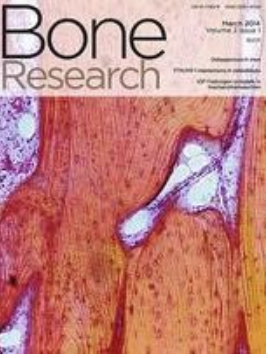Nuclear FGF2 orchestrates phase separation-mediated rDNA chromatin architecture to control BMSCs cell fate.
IF 15
1区 医学
Q1 CELL & TISSUE ENGINEERING
引用次数: 0
Abstract
Ribosomal RNA (rRNA) synthesis is intricately tied to cellular growth and proliferation. Basic fibroblast growth factor (FGF2), a pivotal factor for bone marrow mesenchymal stem cells (BMSCs), can stimulates rRNA transcription, though the underlying mechanism remains unknown. Here, we demonstrate that the cytoplasm-nucleus translocation of FGF2 is determined by the stable nuclear localization motif. Meanwhile, the nuclear FGF2 regulates rRNA expression and BMSCs proliferation via phase separation. Next, through FGF2 related epigenomics and 3D genomes analysis, we identified chromatin architectures during BMSCs differentiation and aging. In the process, topologically associating domains (TADs) and chromatin loops profiling revealed the attenuated genomic interaction among proximal chromosomes 13, 14, 15, 21, and 22, where phase-separated FGF2 facilitates rDNA transcription depend on specific super-enhancers (SEs). Furthermore, we validated that FGF2 orchestrates rDNA chromatin architecture in coordination with STAT5. Together, these findings underscore the pivotal role of FGF2 in rDNA chromatin architectures, which determines BMSCs cell fate.核FGF2协调相分离介导的rDNA染色质结构来控制骨髓间充质干细胞的命运。
核糖体RNA (rRNA)的合成与细胞生长和增殖有着复杂的联系。碱性成纤维细胞生长因子(FGF2)是骨髓间充质干细胞(BMSCs)的关键因子,可以刺激rRNA转录,但其潜在机制尚不清楚。在这里,我们证明了FGF2的细胞质-核易位是由稳定的核定位基序决定的。同时,核FGF2通过相分离调控rRNA表达和骨髓间充质干细胞增殖。接下来,通过FGF2相关表观基因组学和3D基因组分析,我们确定了骨髓间充质干细胞分化和衰老过程中的染色质结构。在此过程中,拓扑相关结构域(TADs)和染色质环分析揭示了近端染色体13、14、15、21和22之间的基因组相互作用减弱,其中相分离的FGF2促进rDNA转录依赖于特定的超增强子(se)。此外,我们验证了FGF2与STAT5协调协调rDNA染色质结构。总之,这些发现强调了FGF2在rDNA染色质结构中的关键作用,rDNA染色质结构决定了骨髓间充质干细胞的命运。
本文章由计算机程序翻译,如有差异,请以英文原文为准。
求助全文
约1分钟内获得全文
求助全文
来源期刊

Bone Research
CELL & TISSUE ENGINEERING-
CiteScore
20.00
自引率
4.70%
发文量
289
审稿时长
20 weeks
期刊介绍:
Established in 2013, Bone Research is a newly-founded English-language periodical that centers on the basic and clinical facets of bone biology, pathophysiology, and regeneration. It is dedicated to championing key findings emerging from both basic investigations and clinical research concerning bone-related topics. The journal's objective is to globally disseminate research in bone-related physiology, pathology, diseases, and treatment, contributing to the advancement of knowledge in this field.
 求助内容:
求助内容: 应助结果提醒方式:
应助结果提醒方式:


